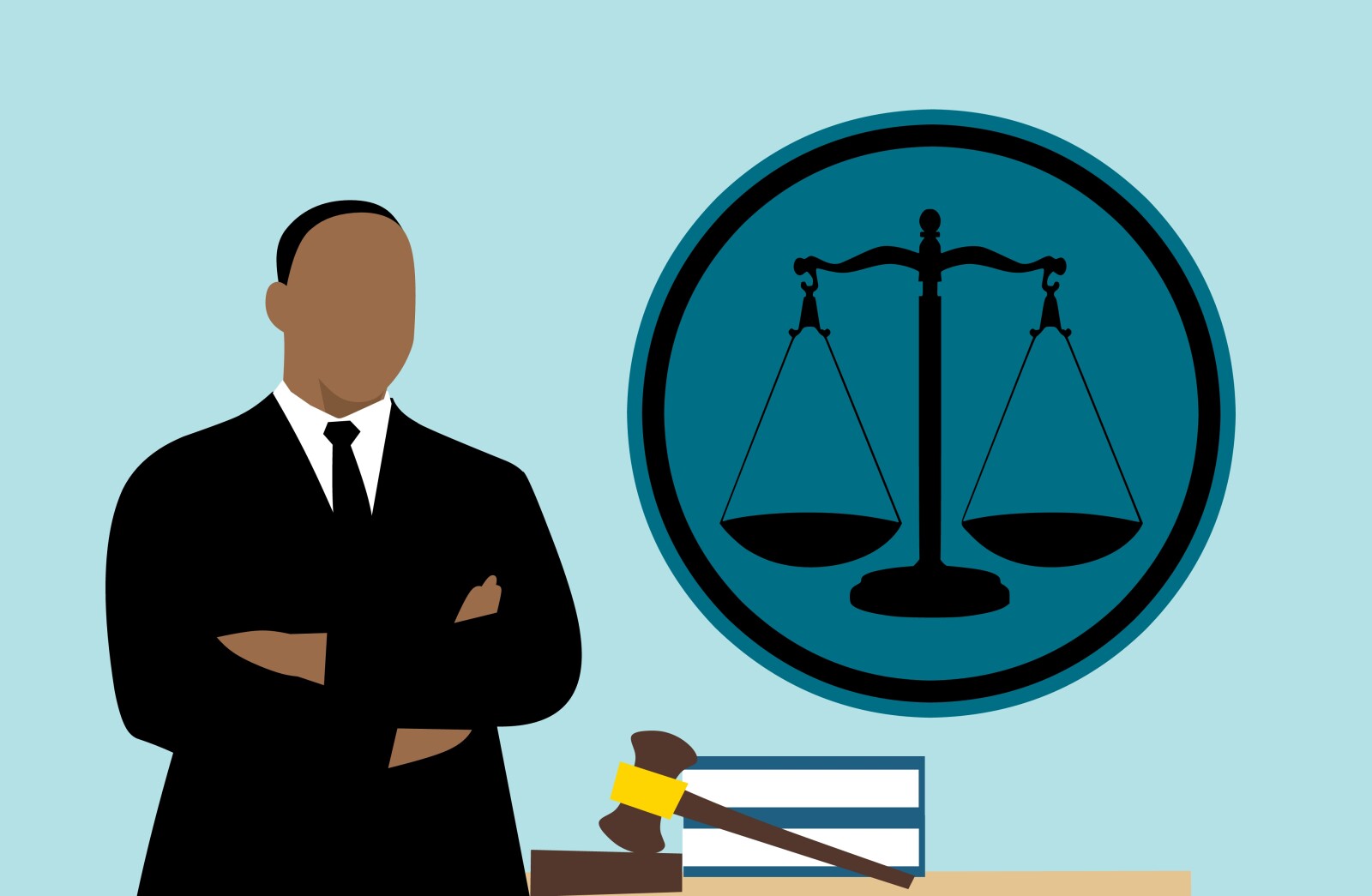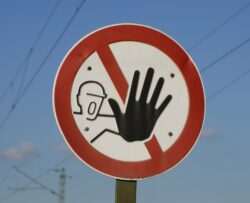Justice for Montana Families: Navigating Wrongful Death Claims Made Easier
This article provides a comprehensive guide to wrongful death claims in Montana. It simplifies the complex legal process, outlines eligibility criteria, and explains how to establish liability. It also highlights the emotional and financial implications experienced by bereaved families and how claims can offer relief. The piece underscores the importance of expert legal assistance in successfully pursuing these claims, providing a vital resource for Montana families seeking justice.

Key Takeaways
- Wrongful death claims in Montana are civil actions brought on behalf of the decedent's family members, focusing on the emotional and financial impact of losing a loved one.
- Only the personal representative of the decedent's estate can file a wrongful death claim, and damages are awarded to the appropriate heirs, not the personal representative.
- Proving liability in wrongful death lawsuits requires the personal representative to prove negligence in the same way the decedent would have had to prove it.
- Damages in wrongful death cases can include loss of consortium, lost support, mental anguish, and reimbursement for funeral and burial expenses. These damages are not part of the decedent's estate and are not subject to claims of creditors or inheritance taxes.
Understanding Wrongful Death Claims in Montana
While Montana law stipulates that only the personal representative of the decedent's estate can file a wrongful death claim, it is essential to understand that the damages awarded are intended to compensate the losses suffered by the decedent's family members, not the representative. This compensation is often achieved by calculating damages for lost support, a complex process that takes into consideration the decedent's earnings, potential future income, and the non-economic contributions they made to the family. It's also crucial to be aware of the statute of limitations in wrongful death claims, which in Montana is three years from the date of death. Navigating these claims can be emotionally taxing and legally intricate, underscoring the importance of seeking experienced legal support.
The Role of the Personal Representative in Wrongful Death Claims
In the context of wrongful death claims, the personal representative bears a significant responsibility, acting as the claimant and carrying the burden of proving liability, yet does not personally receive any of the awarded damages. This individual plays a crucial role in understanding the role of negligence in wrongful death claims, and is tasked with presenting compelling evidence to substantiate such allegations. Part of the claim's complexity lies in calculating damages for lost support, a process that requires a careful examination of the decedent's income, potential future earnings, and the financial impact on dependents. The emotional weight of this responsibility is profound, as the representative is often a family member seeking justice for a loved one's untimely death.
Who Is Eligible to Receive Damages in Wrongful Death Cases
Under Montana law, the damages awarded in a wrongful death case are designated for the decedent's appropriate heirs, such as the spouse, minor children, and parents, despite the claim being filed by the personal representative of the decedent's estate. This process, part of a careful legal procedure, aims to ensure the rightful allocation of damages, particularly for lost support. This involves complex calculations, taking into account the decedent's income, potential future earnings, and the financial needs of the heirs. It's a delicate task, requiring a deep understanding of legal and financial principles. The role of the personal representative is paramount in this process, serving as a trustee to facilitate this transfer of damages, while navigating the intricate and emotionally charged path of a wrongful death claim.
Establishing Liability in Wrongful Death Lawsuits
Proving liability in wrongful death lawsuits involves demonstrating the same elements of negligence that the decedent would have had to establish, and this often requires detailed evidence from the incident, such as witness statements, photos, or video footage. Establishing negligence in wrongful death cases is a multifaceted process, often necessitating the expertise of a seasoned attorney. The plaintiff must illustrate that the defendant had a duty of care towards the deceased, breached that duty, and consequently, this breach resulted in death. Proving causation in wrongful death lawsuits, however, is a complex process, needing a clear link between the defendant's actions and the fatal outcome. This sensitive legal journey requires not only thorough legal understanding but also empathetic handling, considering the emotional trauma associated with such cases.
Common Causes of Wrongful Death in Montana
With a focus on wrongful death claims in Montana, we find that the most common causes are often associated with negligent driving, construction mishaps, aviation accidents, and medical malpractice. These tragedies, rooted in carelessness or oversight, lead to profound loss, inciting both emotional and financial turmoil for the bereaved. The wrongful death claims process in Montana requires the personal representative of the deceased's estate to demonstrate liability. This task can be daunting, necessitating a clear understanding of legal terms and procedures. Legal professionals can provide invaluable assistance, navigating the complexities of the process with empathy and expertise. They strive to ensure that the causes of wrongful death in Montana are thoroughly investigated and the responsible parties held accountable, providing some measure of solace to grieving families.
The Different Types of Damages in Wrongful Death Cases
Remarkably, in wrongful death cases, the types of damages awarded can vary significantly, encompassing aspects like loss of consortium, mental anguish, lost support, and even funeral and burial expenses, each aimed at compensating the family for their profound loss. Calculating damages for lost support involves a complex process that takes into account the deceased's earning potential, age, health, and more. Compensation for emotional distress, on the other hand, is subjective and relies heavily on the emotional toll of the bereaved. It's crucial to note that these damages are not part of the decedent's estate, safeguarding them from creditors or inheritance taxes. This complexity underscores the need for experienced legal assistance in navigating wrongful death claims in Montana.
Loss of Consortium: What It Means and How It’s Calculated
In the context of wrongful death cases, loss of consortium refers to the deprivation of the benefits of a family relationship due to injuries or death, and its calculation, which takes into account factors such as the life expectancy of both the decedent and the survivor, is a process that requires meticulous attention to detail, but it is crucial for ensuring fair compensation. The task of calculating compensation for such an intangible loss can be complex, requiring the expertise of a seasoned legal representation. Attorneys adept in wrongful death cases can navigate this intricate process, considering the depth of the relationship, the relative ages of the parties, and other pertinent details. Their understanding and empathy are vital in addressing the emotional aspect of the case and securing just recompense for the bereaved.
How to Calculate Damages for Lost Support
Calculating damages for lost support involves an assessment of the deceased's earning capacity and expected lifespan, and it must also factor in the financial needs of the surviving family members. While calculating economic damages, legal professionals also consider the decedent's job stability, salary, benefits and even the potential for future promotions. This process is intrinsically linked to the factors to consider in wrongful death claims due to its financial implications for the family left behind. It is a complex, yet vital, aspect of these cases, requiring a thorough understanding of law and financial forecasting. Despite its technical nature, the emotional impact cannot be overlooked. The calculation serves not only as a financial lifeline for survivors, but also as a measure of the tangible loss experienced.
Mental Anguish Damages: A Closer Look
Mental anguish damages, a complex yet essential component of wrongful death claims, compensate the survivors for their grief, sorrow, and emotional distress, and require careful assessment by legal professionals to ensure an equitable resolution. Calculating damages for mental anguish involves a detailed examination of the survivors' emotional suffering and psychological trauma. Unlike tangible losses, mental anguish's intangible nature poses a challenge in calculating monetary compensation. Proving negligence in wrongful death cases is a critical step in claiming mental anguish damages; it involves establishing that the defendant's action or inaction directly led to the decedent's demise. Courts may consider the relationship's closeness, the accident's circumstances, and the survivors' mental health impact when assessing mental anguish damages. These complexities necessitate expert legal guidance to navigate the claim process.
Compensation for Funeral and Burial Expenses
Under the provisions of Montana's wrongful death law, families are often entitled to receive compensation that covers funeral and burial expenses incurred due to a loved one's untimely demise. This provides financial relief during an emotionally difficult time. The law recognizes the significant emotional damages suffered by the family and aims to alleviate the financial burden. To successfully claim these benefits, the personal representative of the deceased's estate must establish liability for the wrongful death. Furthermore, compensation for medical expenses leading up to the death can be sought. It's crucial to consult a skilled attorney who understands the intricacies of Montana's wrongful death law to ensure just compensation. Navigating this complex process is vital to secure rightful restitution for both emotional and financial damages.
The Statute of Limitations for Wrongful Death Claims
The concept of fairness in the legal system is underscored by the statute of limitations for wrongful death claims, which in Montana, is a period of three years from the date of the decedent's passing. This limits the time for filing a claim, thus preserving the integrity of evidence and ensuring timely justice. Calculating damages for lost support forms a significant part of the claim, accounting for the financial support the decedent would have provided. Understanding Montana's wrongful death laws is critical, as these delineate the process, from filing the claim to the calculation of damages. While the legal process can appear overwhelming, particularly in light of the emotional trauma, navigating it successfully can offer a pathway to justice and closure.
The Challenges in Pursuing a Wrongful Death Claim
Despite being a pathway to justice, pursuing a wrongful death claim often involves numerous challenges, both emotional and procedural, including the burden of proving liability and calculating the appropriate damages. Proving negligence in wrongful death cases requires demonstrating that the defendant owed a duty of care to the decedent, breached that duty, and the breach directly caused the death, resulting in damages. Overcoming challenges in wrongful death claims necessitates understanding of complex legal processes and statutes of limitations, as well as marshalling convincing evidence. Coupled with the emotional trauma, these hurdles can be overwhelming. However, with the support of a skilled legal counsel, families can navigate these complexities, ensuring that they secure justice for their loved ones.
Finding Legal Assistance for Wrongful Death Claims in Montana
Finding a seasoned attorney in Montana can significantly alleviate the burdens of pursuing a wrongful death claim, for they possess the needed experience to navigate the complexities of the legal process, and have the expertise to effectively advocate for the rights of the bereaved family. Understanding the legal process is key, as it involves proving negligence or misconduct, which requires the importance of evidence collection and analysis. The attorney assists in identifying liable parties, filing the claim, and presenting a compelling case. They also ensure that the emotional turmoil experienced by the family is factored into the compensation sought. Their profound knowledge of Montana's wrongful death laws makes them an invaluable asset in such challenging times.
Utilizing Montana Law Firm Directories
With numerous Montana law firm directories available, it is essential to review multiple sources for comprehensive information, and ensure the chosen attorney has a proven track record in handling wrongful death claims. Understanding wrongful death laws in Montana is crucial as they dictate who can file a claim, the type of evidence required, and potential damages. The importance of gathering evidence in wrongful death cases cannot be overstated as it is instrumental in establishing liability. This process can be emotionally taxing; hence, the need for an empathetic, experienced attorney. These professionals guide clients through the complex legal intricacies, ensuring families receive the justice they deserve while honoring the memory of their loved ones.
Lawsuit Legit: A Resource for Wrongful Death Claims
Lawsuit Legit serves as a valuable resource for individuals navigating wrongful death claims, offering a multitude of free personal injury guides and resources, and providing essential support during a challenging time. Their resources aid in understanding the legal process, making it less overwhelming for those grappling with emotional distress. With an empathetic approach, they help elucidate the complexity of wrongful death cases, covering aspects such as eligibility, damages, and proving liability. Lawsuit Legit ensures that the bereaved understand their rights, and the potential compensation they are entitled to, for losses suffered. The website also offers access to a comprehensive law firm directory, facilitating the selection of proficient legal support. Thus, Lawsuit Legit remains a crucial aid in the pursuit of justice through wrongful death claims.
Frequently Asked Questions
What Happens if the Personal Representative of the Decedent’s Estate Is Unable or Unwilling to File a Wrongful Death Claim?”
If the personal representative is unable or unwilling to file a wrongful death claim in Montana, the court may appoint a representative replacement to pursue the claim. This procedure addresses claim obstacles, ensuring the decedent's family can seek justice. However, appointing a new representative requires legal expertise to ensure compliance with Montana's laws. Therefore, it is advisable for the family to seek support from a knowledgeable attorney to navigate this complex process.
Are There Any Exceptions to the 3-Year Statute of Limitations for Wrongful Death Claims in Montana?”
In Montana, the general rule is a three-year statute of limitations for wrongful death claims. However, certain exceptions may apply under specific circumstances, such as when the wrongful act causing the death is discovered later. Surviving spouse rights also factor into these cases, as they may be able to extend the limitation period in some situations. It's advised to consult with a legal professional to understand these complexities and navigate potential exceptions.
Can the Awarded Damages From a Wrongful Death Claim Be Divided Unevenly Among the Eligible Heirs?”
In Montana, the distribution of damages awarded in a wrongful death claim is determined by the court. The division is not necessarily equal among eligible heirs; it may be influenced by factors such as financial dependency, personal relationship, and age. Disagreements among heirs over damage calculation can arise, potentially necessitating mediation or court intervention. An experienced attorney can provide guidance to ensure a fair and equitable distribution, taking into account the unique circumstances of each case.
What Kind of Evidence Is Typically Used to Establish Liability in Wrongful Death Lawsuits?”
In wrongful death lawsuits, evidence collection plays a crucial role in establishing liability. Typically, this could involve police reports, eyewitness testimonies, medical records, expert testimonies, and any proof of negligence or misconduct. Liability proof hinges on demonstrating that the defendant's actions, or lack thereof, directly resulted in the decedent's death. It's paramount to have strong, compelling evidence to effectively argue that the defendant should be held accountable for the death.
Can a Wrongful Death Claim Be Pursued if the Cause of Death Is Not One of the Common Causes Listed?”
Yes, a wrongful death claim can be pursued even if the cause of death is not one of the common causes listed. Regardless of the unusual causes, claim eligibility primarily hinges on the ability to prove negligence or wrongdoing on the part of the defendant. It's crucial to consult with a knowledgeable attorney to thoroughly investigate the circumstances surrounding the death and to determine the viability of a wrongful death claim.
Conclusion
This guide provides a comprehensive understanding of wrongful death claims in Montana, detailing eligibility, liability, and potential damages. It underscores the challenges involved in pursuing these claims and the crucial role of legal assistance. By offering insights into Montana's specific laws and resources like Lawsuit Legit, it serves as a valuable tool for Montana families seeking justice. Ultimately, this guide simplifies the complex process, offering support to those navigating this emotionally and financially taxing journey.




